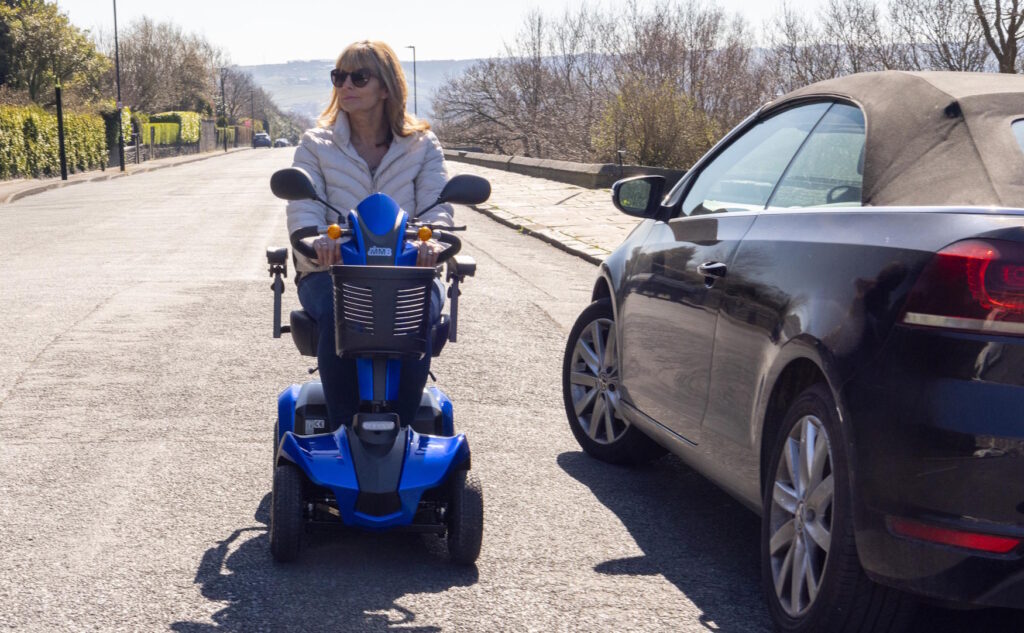
For many people with mobility issues, mobility scooters are a lifeline. Mobility scooters and powered wheelchairs give people with a physical disability or medical condition, the freedom to travel and explore their surroundings independently and confidently.
But what about driving a mobility scooter on the road? What are the laws and requirements? This comprehensive guide covers everything you need to know, including mobility scooter road rules, registration, insurance, and safety tips for using your scooter on UK roads.
It depends whether you drive a class 2 or a class 3 mobility scooter. Mobility scooters are divided into two main categories: Class 2 and Class 3 scooters. Understanding the difference is key to knowing where and how you can ride them.
Class 2 mobility scooters are primarily intended for pavement use and pedestrian areas. With a maximum speed limit of 4 mph, they are designed to provide users with a safe and convenient mode of transportation while navigating pedestrian areas.
Class 2 scooters are not road legal mobility scooters, so they cannot be used on public roads, except when crossing the road.
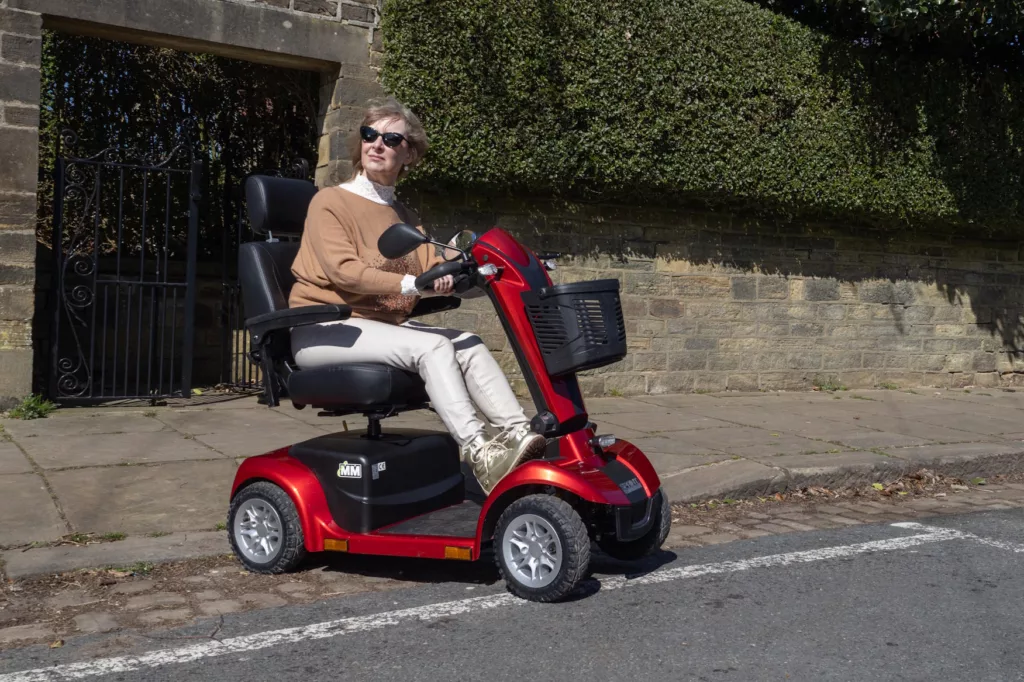
Yes, Class 3 mobility scooters are allowed on the road in the UK, but with specific requirements. The maximum speed for class 3 mobility scooters is 8mph.
A Class 3 mobility scooter is considered a road legal mobility scooter. These scooters are faster, larger, and come equipped with essential safety features such as lights, mirrors, and indicators, an efficient braking system, and a horn.
It depends on whether you have a class 2 or class 3 mobility scooter.
Class 3 (road-legal scooters) must be registered with the DVLA, but class 2 scooters (pavement scooters) do not need to be registered.
Registering your class 3 mobility scooter with the DVLA makes sure you are adhering to mobility scooter legal requirements, and it can also allow you to benefit from certain exemptions and tax breaks.
To register your mobility scooter, simply complete and submit registration form V55/MV. You can find more information on the DVLA website.
Once registered, you will receive a registration certificate (V5C) and legal confirmation that your scooter is a road-legal Class 3 vehicle.
Registering class 3 mobility scooters with the DVLA ensures they are exempt from road tax, provided they have a device limiting them to 4 mph on the pavement.
No, mobility scooters don’t need a license plate. However, if you own a class 3 scooter, it does need to be registered with the DVLA.
While insurance for a mobility scooter is not a legal requirement in the UK, it is highly recommended – especially when driving a mobility scooter on the road.
When taking out Mobility Scooter insurance, third-party liability insurance offers protection in the event of an accident or damage caused to another person or property while operating the scooter. Without this coverage, you could be held financially responsible for any damages or injuries incurred.
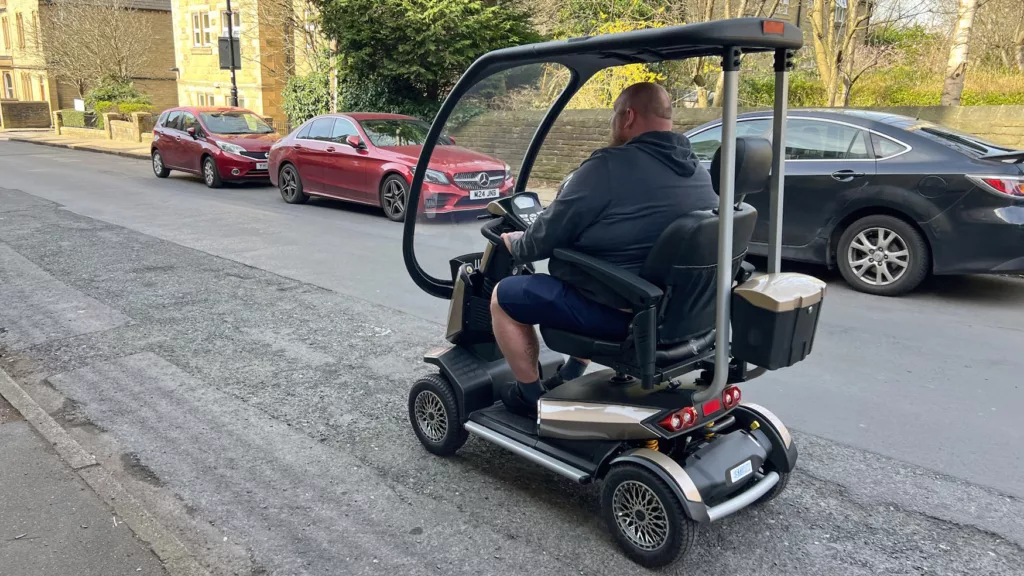
If you are driving a mobility scooter on the road, you must adhere to the same rules and regulations as other drivers to ensure your safety and that of others around you.
You should adhere to traffic laws and signals, and always travel in the same direction as traffic when on the road.
While class 3 scooters can be used on roads, they are not allowed on motorways or in bus lanes. You can travel on a dual carriageway, but you should equip your mobility scooter with an amber flashing light for visibility. Although where possible, we would always recommend travel on a dual carriageway should be avoided in the interests of safety.
Regardless of the scooter class, it is crucial to respect speed limits (8 mph for class 3 scooters; 4mph for class 2 scooters), exercise proper road and pavement etiquette, and be aware of restricted areas. Always give priority to pedestrians on pavements and exercise caution when navigating around other vehicles on the road.
Ensuring safe and responsible mobility scooter use on the road is of utmost importance. By following these tips and understanding other mobility scooter laws, you can minimise the risk of accidents and enjoy a safer, more comfortable experience on your scooter.
Although not legally required, it is recommended that you wear a helmet and other protective gear when riding a scooter. You should be aware of your surroundings and obey all traffic laws.
Visibility is one of the most critical aspects of safe mobility scooter use. You should consider wearing reflective clothing and attaching a safety flag to your scooter. These measures can help make you more noticeable to other road users, reducing the risk of accidents and collisions.
You should remain particularly alert to your surroundings, avoiding distractions such as mobile phones and headphones and exercising caution when crossing roads and driveways.
Regular maintenance is essential for keeping your mobility scooter in top condition and ensuring optimal performance on the road. This includes cleaning your scooter regularly, ensuring the battery is charged, and having your scooter serviced annually or bi-annually.
By adhering to a regular maintenance schedule, you can prolong the life of your scooter and ensure a safe and enjoyable experience on the road.
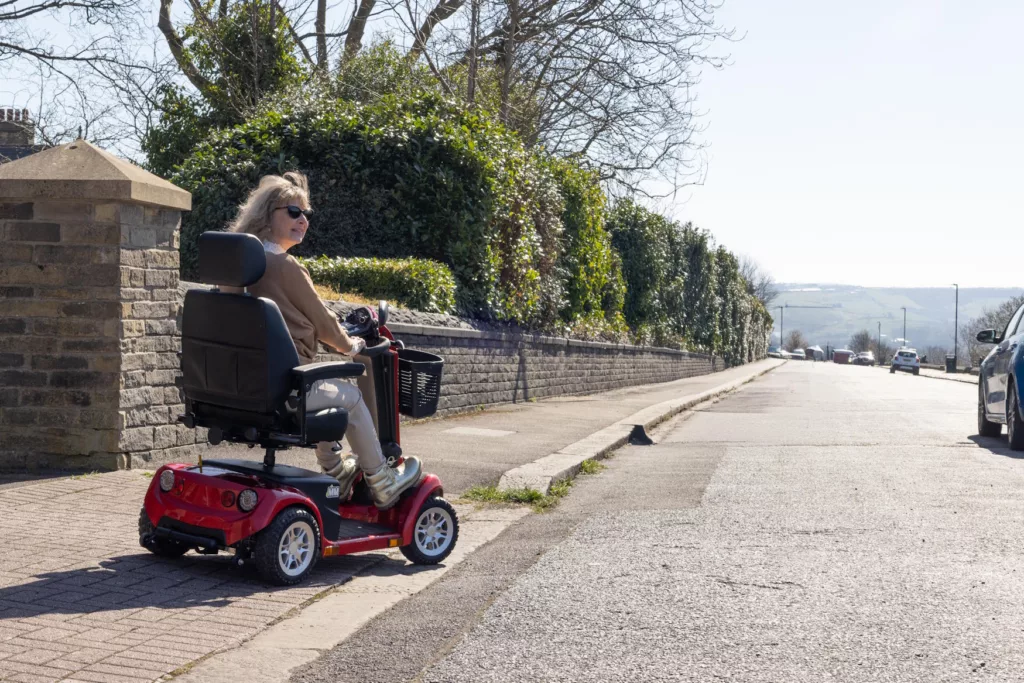
Whether you’re considering driving a mobility scooter on the road or just learning the mobility scooter road rules, knowing the difference between Class 2 and Class 3 scooters is vital. Only Class 3 mobility scooters are allowed on the road in the UK, and they must be registered with the DVLA and equipped with essential safety features.
At Monarch Mobility, we understand that choosing the right scooter can be overwhelming. Our friendly, expert team is here to help. Contact us to speak with an advisor or arrange a free home demonstration today!
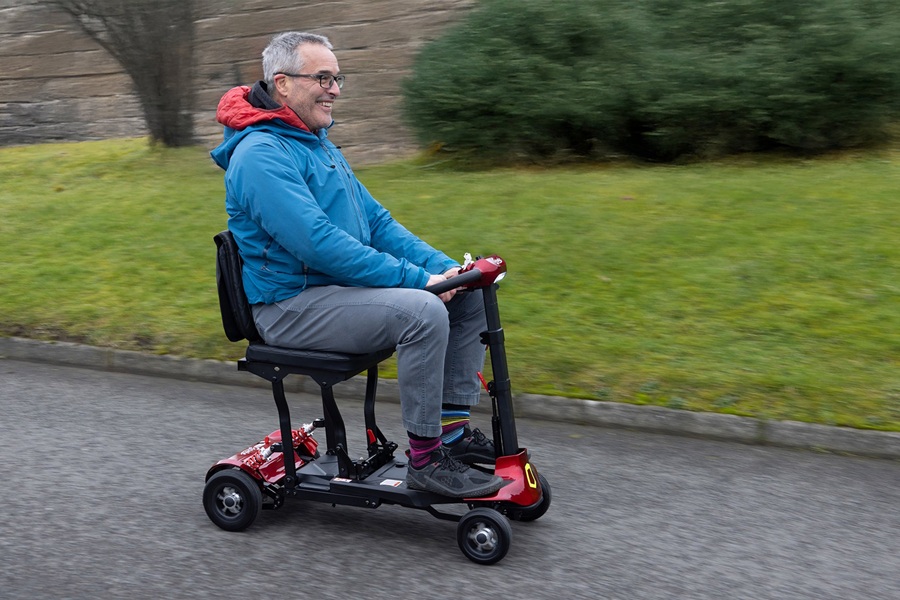
Will you be joining us at the Motability Harrogate event on the 1st and 2nd of August?